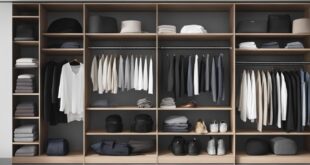Sustainable fashion is a growing movement that addresses the environmental and social impact of the fashion industry. As consumers become more conscious of their purchasing choices, sustainable fashion brands are emerging to meet the demand for eco-friendly and ethically-made clothing. This article will delve into the origins and development of sustainable fashion, exploring the milestones and innovations that have shaped the industry. We’ll also discuss the role of eco-friendly trends and mindful consumer behavior in reshaping the fashion world.
The Roots of Sustainable Fashion
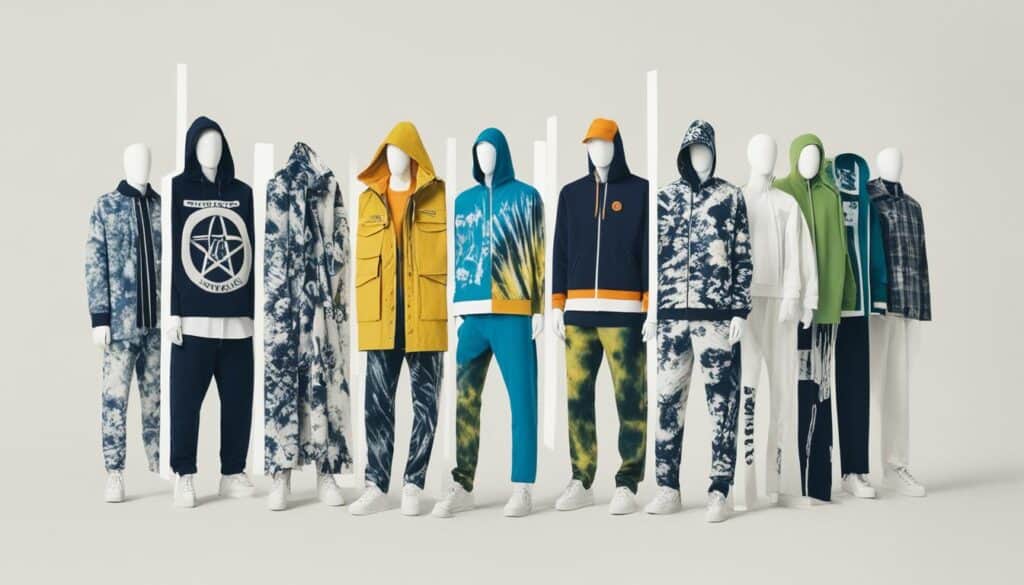
The roots of sustainable fashion can be traced back to the Industrial Revolution, a turning point in history that brought about significant changes in manufacturing and consumption practices. The Industrial Revolution marked the transition from handmade production to mass production, revolutionizing industries such as clothing and textiles. This shift towards mass production led to the rise of fast fashion, characterized by cheap and disposable garments.
However, as the negative environmental and social impacts of fast fashion became apparent, counterculture movements emerged in the 1960s and 1970s to challenge mainstream consumerism and embrace more sustainable practices. The hippie and punk rock movements, in particular, rejected the mass production of goods and championed concepts such as environmental consciousness, self-expression, and social justice.
These counterculture movements laid the foundation for sustainable fashion by promoting alternative ways of producing and consuming clothing. Handmade garments, locally-sourced materials, and a focus on sustainability became central to their ethos. By rejecting the fast fashion model and embracing eco-friendly practices, these movements sparked a new wave of awareness and set the stage for the future of sustainable fashion.
Key Milestones in Sustainable Fashion
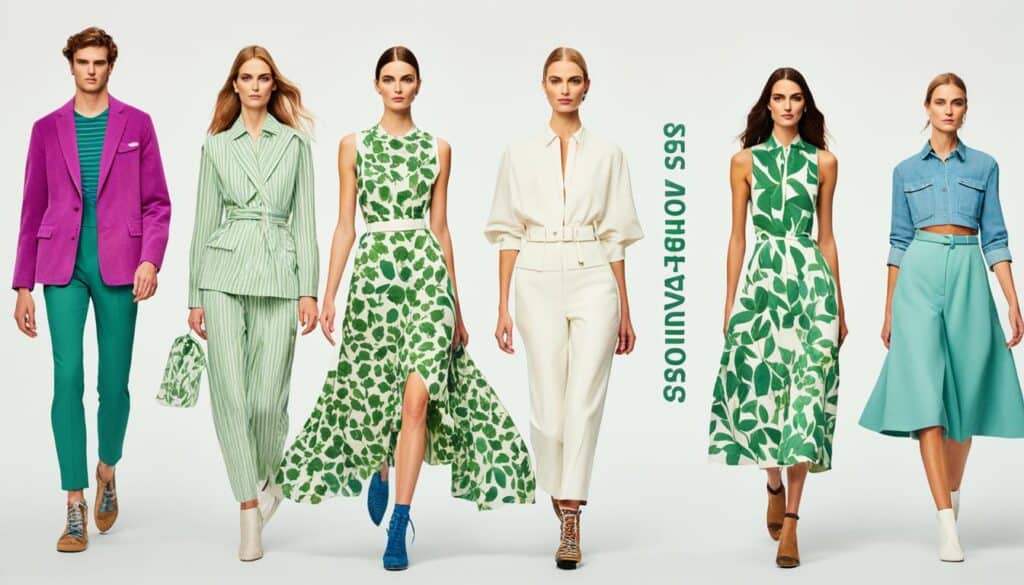
The evolution of sustainable fashion has been marked by significant milestones that have shaped the industry and paved the way for positive change. These milestones include the establishment of fair trade and ethical certifications, the devastating Rana Plaza disaster, and the emergence of the Fashion Revolution movement.
Fair Trade and Ethical Certifications
Fair trade and ethical certifications have played a crucial role in promoting ethical and sustainable practices within the fashion industry. Organizations such as the World Fair Trade Organization and the Fair Trade Certified label ensure that workers along the supply chain receive fair wages and work in safe and equitable conditions. These certifications also prioritize environmentally friendly production methods and support sustainable livelihoods for communities involved in the production process.
The Rana Plaza Disaster
The Rana Plaza disaster, which occurred in Bangladesh in 2013, was a tragic event that marked a turning point in the fashion industry. The collapse of the Rana Plaza building, which housed several garment factories, resulted in the loss of over 1,100 lives and injured thousands more. This incident shed light on the hazardous working conditions and lack of safety regulations within the industry, leading to a global outcry for change.
The Fashion Revolution Movement
As a response to the Rana Plaza disaster, the Fashion Revolution movement emerged to advocate for greater transparency and ethical reform in the fashion supply chain. This global movement encourages consumers to ask brands, “Who made my clothes?” in order to promote transparency and accountability. Through events, campaigns, and educational initiatives, the Fashion Revolution movement has played a significant role in raising awareness and driving positive change in the fashion industry.
Pioneering Sustainable Fashion Brands

Leading sustainable fashion brands, such as Patagonia, People Tree, and Stella McCartney, have been at the forefront of the movement. These brands have paved the way for eco-friendly and ethical practices in the industry.
Patagonia, known for its outdoor apparel, has been a trailblazer in sustainable fashion. The company pioneered the use of recycled polyester and organic cotton in its products, reducing environmental impact and promoting responsible sourcing.
People Tree, a fair trade fashion brand, has focused on sustainability throughout its supply chain. By partnering with artisans and farmers, the brand ensures fair wages, safe working conditions, and the use of sustainable materials.
Stella McCartney, a luxury fashion brand, has long been committed to sustainability. Stella McCartney has championed the use of vegetarian and cruelty-free materials, promoting animal welfare in the fashion industry.
These pioneering brands have not only demonstrated the possibility of creating fashionable and sustainable clothing but have also inspired other fashion companies to follow suit. By prioritizing sustainable materials and practices, Patagonia, People Tree, and Stella McCartney have set a new standard for the industry.
The Rise of Conscious Consumerism
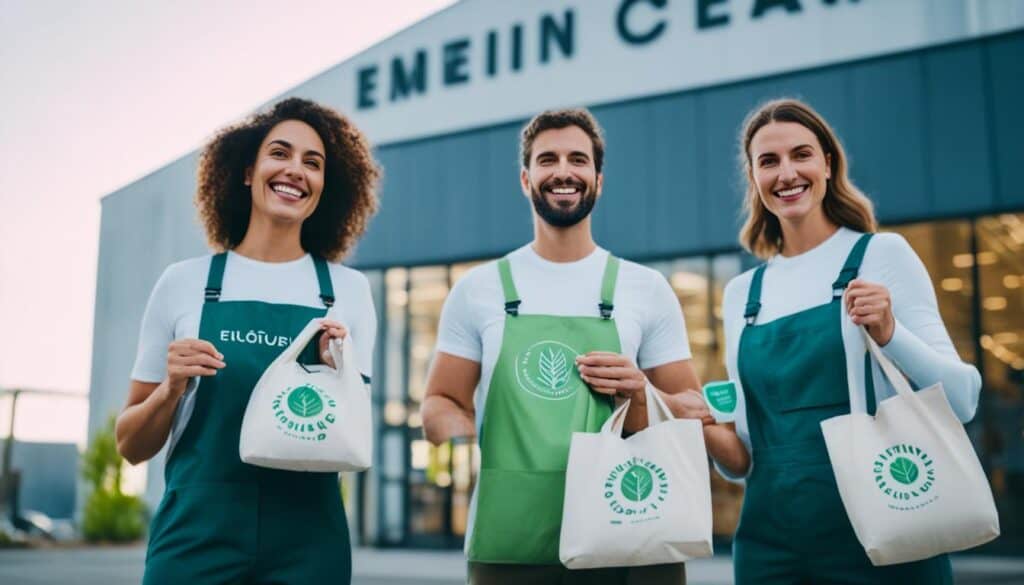
The rise of conscious consumerism has had a profound impact on the fashion industry, particularly in the realm of sustainable fashion. As consumers become increasingly aware of the detrimental environmental and social consequences of fast fashion, they are seeking out alternatives that align with their values and beliefs.
Conscious consumerism involves making purchasing decisions based on sustainability criteria, such as the use of eco-friendly materials, fair labor practices, and transparent supply chains. This shift in consumer behavior is pushing fashion brands to prioritize sustainability and respond to the demands of conscious consumers.
Today, more than ever, consumers are taking the time to research and understand the production process behind the clothes they buy. They are seeking out brands that demonstrate a commitment to ethical and sustainable practices, such as using organic or recycled materials, supporting fair trade, and minimizing waste.
Furthermore, consumers are becoming active participants in the movement towards sustainable fashion by embracing practices such as vintage and second-hand shopping, clothing swaps, and upcycling. These conscious choices contribute to reducing the environmental impact of the fashion industry and promoting a circular economy.
As sustainable fashion continues to gain momentum, consumers are becoming catalysts for change. By using their purchasing power to support brands that prioritize sustainability, consumers are demanding greater transparency and accountability from the fashion industry as a whole.
Embedded within this section is an image that embodies the essence of conscious consumerism in sustainable fashion.
Key points:
- Conscious consumerism drives the growth of sustainable fashion.
- Consumers seek out eco-friendly materials, fair labor practices, and transparent supply chains.
- Research and understanding of production processes are becoming crucial in making informed fashion choices.
- Vintage shopping, second-hand clothing, and other sustainable practices are gaining popularity.
- Consumers are demanding greater transparency and accountability from the fashion industry.
Environmental Impact of Fast Fashion

Fast fashion has gained notoriety due to its significant environmental impact on the fashion industry. The production process of fast fashion garments involves the use of toxic chemicals, high water consumption, and substantial energy use. This results in pollution and resource depletion, exacerbating the challenges posed by climate change.
The use of toxic chemicals in dyeing and processing fabrics contributes to water pollution, as these chemicals are often released into water bodies without proper treatment. This contamination adversely affects ecosystems and threatens the health of both humans and wildlife. Moreover, the high water consumption required for the production and irrigation of raw materials, such as cotton and synthetic fibers, further strains water resources.
Additionally, the fast fashion business model relies on rapid turnover, encouraging consumers to purchase new clothing frequently. This disposable culture leads to immense textile waste, as garments are often discarded after only a few wears. The improper disposal of these textiles exacerbates the already overflowing landfills and contributes to greenhouse gas emissions.
As the fashion industry continues to grow, its environmental impact becomes increasingly evident. To address these issues and mitigate the consequences of fast fashion, sustainable practices are crucial. Fashion brands need to adopt more environmentally friendly production methods, reduce water consumption, and invest in sustainable materials. Moreover, consumers can play a vital role in supporting sustainability by engaging in conscious shopping, recycling or donating unwanted clothes, and supporting brands that prioritize ethical and sustainable practices.
Key Environmental Impacts of Fast Fashion:
- Release of toxic chemicals into water bodies
- High water consumption
- Resource depletion
- Textile waste
- Landfill overcrowding
- Greenhouse gas emissions
Social Issues in the Fashion Industry
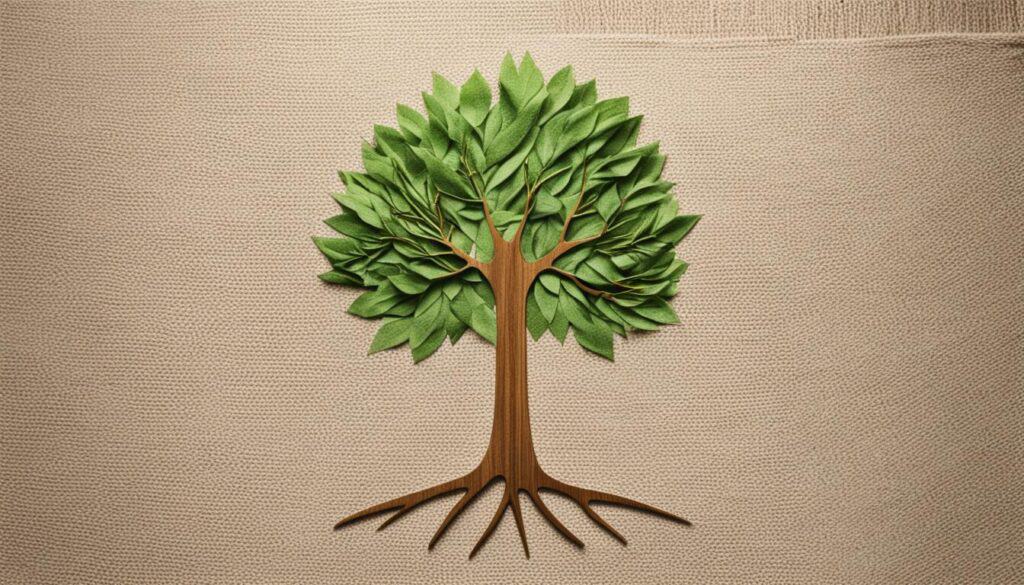
The fashion industry is not only responsible for environmental damage but is also plagued by various social issues. Poor working conditions, child labor, and animal cruelty are ethical concerns that are deeply connected to the industry. These issues have been exposed through investigations and exposés, raising awareness among consumers and prompting them to demand greater transparency and ethical practices from fashion brands.
Ethical and sustainable fashion aims to address these social issues by prioritizing the welfare of people, animals, and the environment. It seeks to improve working conditions for garment workers, eliminate child labor from the supply chain, and promote the ethical treatment of animals. By supporting ethical and sustainable fashion, consumers can contribute to a more responsible and compassionate industry.
Innovations in Sustainable Fashion

Innovations in sustainable fashion are driving the evolution of the industry, offering more eco-friendly alternatives and making sustainable fashion more accessible and affordable to consumers. From sustainable materials to circular economy practices, the fashion industry is embracing change and prioritizing sustainability.
Sustainable Materials
The use of sustainable materials is a key innovation in the fashion industry. Organic cotton, for example, is grown without the use of harmful chemicals, reducing the environmental impact of traditional cotton production. Recycled polyester, made from recycled plastic bottles, offers a more sustainable alternative to virgin polyester. These materials not only minimize environmental harm but also promote responsible consumption.
Circular Economy Practices
The adoption of circular economy practices is another major innovation in sustainable fashion. Circular economy aims to create a closed-loop system where resources are reused, repaired, and recycled instead of being discarded. This approach reduces waste and extends the lifespan of fashion products, minimizing the industry’s impact on the environment. By embracing circular economy practices, fashion brands and consumers can contribute to a more sustainable and efficient industry.
Fashion Rental and Thrifting
The rise of fashion rental services and thrifting has made sustainable fashion more accessible and affordable to a wider audience. Fashion rental allows consumers to borrow clothing and accessories for a specific period, reducing the need for new purchases and reducing waste. Thrifting, on the other hand, involves purchasing second-hand clothing, giving pre-owned garments a new lease on life. These options promote conscious consumption and contribute to a more sustainable fashion industry.
The Future of Sustainable Fashion
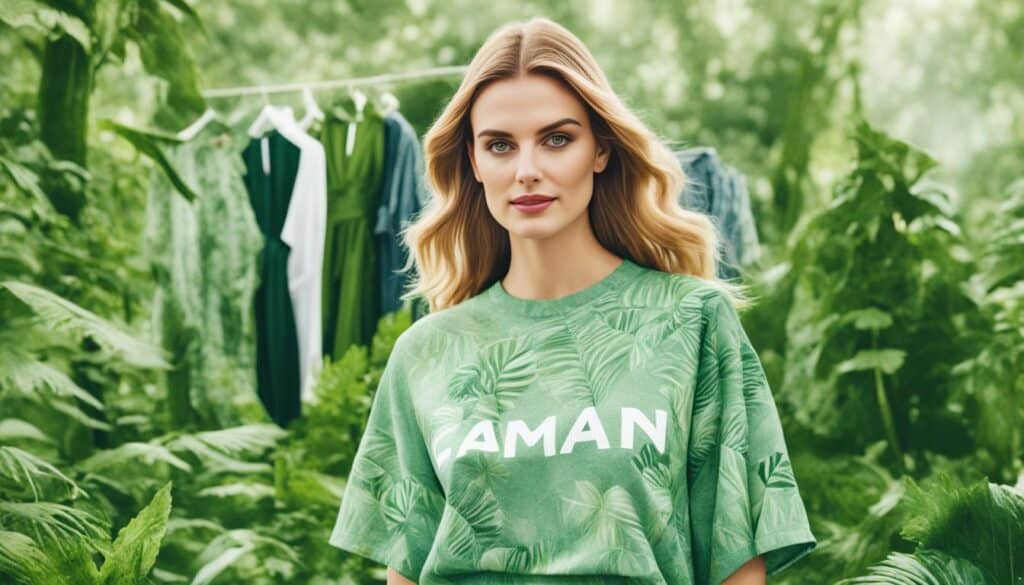
The future of sustainable fashion holds great promise as more brands embrace eco-friendly and ethical practices. With a growing emphasis on sustainability and increasing consumer demand for responsible fashion choices, the industry is on a path towards a more sustainable future.
New Sustainable Materials
One of the key factors shaping the future of sustainable fashion is the development of new, innovative materials. Brands are exploring alternative fabrics that are eco-friendly and have a lower environmental impact. From plant-based fibers like bamboo and hemp to man-made materials produced from recycled plastic bottles, these sustainable alternatives are revolutionizing the fashion industry.
The Circular Economy
Another crucial aspect of the future of sustainable fashion is the expansion of circular economy practices. The circular economy aims to minimize waste and maximize the use of resources by promoting reuse, recycling, and upcycling. By keeping materials in circulation for as long as possible, the fashion industry can significantly reduce its environmental footprint and create a more sustainable and circular system.
Fashion Rental and Thrifting
The popularity of fashion rental services and thrifting is also playing a significant role in shaping the future of sustainable fashion. Renting clothes can help reduce the demand for new production, as consumers have access to a variety of clothing options without contributing to textile waste. Thrifting, or buying second-hand garments, not only extends the lifespan of clothing items but also promotes a more sustainable and conscious approach to fashion consumption.
In summary, the future of sustainable fashion is characterized by the adoption of eco-friendly practices, the expansion of the circular economy, and the growth of fashion rental and thrifting. By embracing these trends and innovations, the fashion industry is moving towards a more sustainable and responsible future.
The Impact of Sustainable Fashion Brands

Sustainable fashion brands are playing a vital role in driving positive change within the fashion industry by prioritizing environmental sustainability and social responsibility. These brands are challenging the norms of fast fashion and revolutionizing the way fashion is produced and consumed. Through their practices and initiatives, sustainable fashion brands are making a significant impact on both the environment and society.
One of the key ways in which sustainable fashion brands are making a difference is through the use of sustainable materials. By prioritizing eco-friendly fabrics like organic cotton, hemp, and recycled polyester, these brands are reducing the environmental footprint of the fashion industry. The implementation of sustainable materials promotes responsible sourcing and production practices, leading to a more sustainable and ethical fashion industry.
In addition to using sustainable materials, sustainable fashion brands are also committed to promoting fair labor practices. This means ensuring safe working conditions, fair wages, and prohibiting the use of child labor within their supply chains. By placing a strong emphasis on social responsibility, these brands are working towards creating a more equitable and ethical fashion industry.
Another crucial aspect of the impact of sustainable fashion brands is their commitment to transparency. Many sustainable brands are dedicated to providing full traceability of their supply chains, allowing consumers to make informed decisions about the brands they support. This transparency helps to build trust and accountability within the industry, encouraging other fashion brands to follow suit.
The impact of sustainable fashion brands extends beyond their individual practices. By setting an example and championing sustainable fashion, these brands are inspiring and influencing other players in the industry to adopt more sustainable and responsible practices. This domino effect creates a ripple of positive change throughout the entire fashion ecosystem, from designers and manufacturers to consumers and policymakers.
In conclusion, sustainable fashion brands are driving significant change within the fashion industry. Through their focus on environmental sustainability, social responsibility, and transparency, these brands are reshaping the industry and setting new standards for ethical and eco-friendly fashion. The impact of sustainable fashion brands goes beyond individual practices and influences the industry as a whole, paving the way for a more sustainable and responsible future.
The Importance of Sustainable Fashion Education

Sustainable fashion education plays a crucial role in raising awareness and driving change in the fashion industry. By educating designers, consumers, and industry professionals about the environmental and social impacts of fashion, sustainable fashion education fosters a mindset shift towards more sustainable practices. It also equips individuals with the knowledge and skills necessary to create and support sustainable fashion initiatives.
With the growing concern for the environment and social responsibility, sustainable fashion education is instrumental in promoting the adoption of eco-friendly and ethical practices in the industry. Through courses, workshops, and other educational programs, individuals are empowered to understand the consequences of their actions and make informed choices.
Designers who receive sustainable fashion education are better equipped to create collections that prioritize environmental sustainability and social responsibility. They learn about sustainable materials, responsible production methods, and innovative design techniques. This knowledge allows them to create garments that minimize waste, reduce pollution, and promote social justice.
Consumers, on the other hand, benefit from sustainable fashion education by gaining a deeper understanding of the environmental and social impact of their clothing choices. They become more conscious of the need for sustainable practices and make informed decisions when purchasing garments. Sustainable fashion education empowers consumers to support brands that align with their values and encourages them to demand transparency and ethical practices from the fashion industry.
Industry professionals, including retailers, marketers, and policymakers, also play a crucial role in driving change in the fashion industry. Sustainable fashion education equips these professionals with the tools and knowledge to advocate for sustainable fashion practices within their organizations. It enables them to adopt sustainable business models, promote sustainable brands, and implement policies that champion environmental and social sustainability.
Overall, sustainable fashion education is essential for creating a more conscious and responsible fashion industry. By raising awareness, fostering a mindset shift, and providing the necessary knowledge and skills, sustainable fashion education paves the way for a more sustainable future. It empowers individuals to make positive contributions to the industry and inspires collective action towards a more sustainable and ethical fashion ecosystem.
Collaboration for a Sustainable Future

Creating a sustainable future for the fashion industry requires collaboration between fashion brands, governments, and consumers. By working together, these industry stakeholders can drive systemic change and make a significant impact on sustainability.
Industry stakeholders, including fashion brands, have a crucial role to play in promoting sustainable fashion practices. By incorporating eco-friendly materials, implementing ethical and transparent supply chains, and embracing circular economy principles, fashion brands can reduce their environmental footprint and contribute to a more sustainable industry.
Government involvement is equally important in shaping the future of sustainable fashion. Governments can implement policies and regulations that promote sustainability, such as incentivizing sustainable practices, enforcing ethical labor standards, and investing in research and development of sustainable materials.
Collaboration among fashion brands, governments, and consumers can also lead to the sharing of best practices and the development of innovative solutions to environmental and social challenges in the fashion industry. By pooling resources, expertise, and knowledge, these stakeholders can work towards common goals and drive positive change.
Ultimately, collaboration is the key to creating a sustainable future for the fashion industry. By joining forces, fashion brands, governments, and consumers can pave the way for a more environmentally and socially conscious fashion industry that benefits both present and future generations.
Sustainable Fashion Initiatives and Campaigns

Various sustainable fashion initiatives and campaigns have emerged to drive positive change in the fashion industry. These initiatives aim to address the environmental and social challenges posed by unsustainable fashion practices and promote the importance of sustainable fashion.
One notable initiative is the Fashion Revolution movement which was founded in response to the tragic Rana Plaza disaster in Bangladesh in 2013. This campaign calls for greater transparency and accountability in the fashion supply chain. It aims to raise awareness among consumers and industry stakeholders about the social and environmental impact of fashion production. The Fashion Revolution movement encourages consumers to ask the question, “Who made my clothes?” in order to drive change and promote ethical reform.
Another significant campaign is Detox My Fashion by Greenpeace. This campaign focuses on eliminating hazardous chemicals from the fashion industry’s supply chain. By exposing the use of toxic substances in clothing production, Detox My Fashion aims to hold major clothing companies accountable and push them to prioritize safer and more sustainable practices. Through awareness-raising and public pressure, this campaign has catalyzed change and encouraged fashion companies to adopt more responsible approaches to chemical management.
These sustainable fashion initiatives play a crucial role in raising awareness, empowering consumers, and driving industry-wide change. By promoting greater transparency, ethical practices, and the elimination of harmful chemicals, these campaigns contribute to the collective effort towards a more sustainable and responsible fashion industry.
The Role of Consumers in Sustainable Fashion

Consumers have a significant role to play in driving the sustainable fashion movement. By making conscious shopping choices and supporting sustainable brands, consumers have the power to influence and shape the industry towards a more sustainable future.
Conscious shopping is a powerful tool for promoting sustainability in fashion. It involves considering the environmental and social impact of fashion purchases and making informed decisions based on these factors. By prioritizing sustainability, consumers can demand transparency, fair labor practices, and the use of eco-friendly materials from fashion brands.
Through their buying decisions, consumers can create a demand for sustainable fashion, encouraging more brands to adopt ethical and eco-friendly practices. By supporting sustainable brands, consumers can also send a message to the fashion industry that sustainability matters.
Consumers can use their consumer power to advocate for change and promote a more sustainable fashion industry. By choosing to invest in sustainable and ethical fashion, consumers can drive the demand for sustainable practices, encouraging more brands to prioritize sustainability.
Ultimately, consumers have the ability to hold brands accountable and make a positive impact on the fashion industry. By embracing conscious shopping and supporting sustainable fashion, consumers can be a powerful force for change and contribute to a more sustainable and responsible fashion industry.
The Global Impact of Sustainable Fashion

Sustainable fashion has become a global movement with far-reaching impacts on communities and industries worldwide. The growing popularity of sustainable fashion trends reflects a global shift towards more eco-conscious and socially responsible practices in the fashion industry.
Sustainable fashion is not limited to a single region or country; it has gained momentum and recognition across the globe. From major fashion capitals to local communities, people are embracing sustainable fashion as a way to mitigate the negative effects of traditional fashion practices on the environment and society.
The global impact of sustainable fashion extends beyond consumer behavior and brand choices. Manufacturers, suppliers, and designers are increasingly incorporating sustainable practices into their operations, from sourcing eco-friendly materials to implementing circular economy principles.
Sustainable fashion has the potential to transform the entire fashion industry by setting new standards and inspiring change. As more brands and consumers adopt sustainable practices, the demand for eco-friendly products continues to grow. This shift towards sustainability is driving innovation and encouraging collaboration to find alternative solutions for a more sustainable and equitable future.
By embracing sustainable fashion trends worldwide, we can collectively contribute to creating a positive global impact on the environment, communities, and the future of the fashion industry.
Conclusion:
The rise of sustainable fashion brands is reshaping the fashion industry, driving change towards more eco-friendly and ethical practices. With a growing understanding of the negative impacts of traditional fashion, consumers are demanding sustainable alternatives that prioritize environmental sustainability and social responsibility.
Innovations in sustainable materials and production processes, such as organic cotton and circular economy practices, are paving the way for a more sustainable future in the fashion industry. These innovations, coupled with increasing consumer awareness and conscious shopping habits, are pushing brands to prioritize sustainability in their operations.
Collaboration between fashion brands, governments, and consumers is crucial for sustaining the momentum of the sustainable fashion movement. By working together, industry stakeholders can drive systemic change, implement regulations that promote sustainability, and develop innovative solutions to environmental and social challenges.
As the future of sustainable fashion unfolds, it holds the promise of a more ethical and responsible fashion industry. By continuing to prioritize sustainability, fashion can become a force for positive change that benefits both people and the planet, creating a more sustainable and equitable future for all.
 Fullersears
Fullersears



